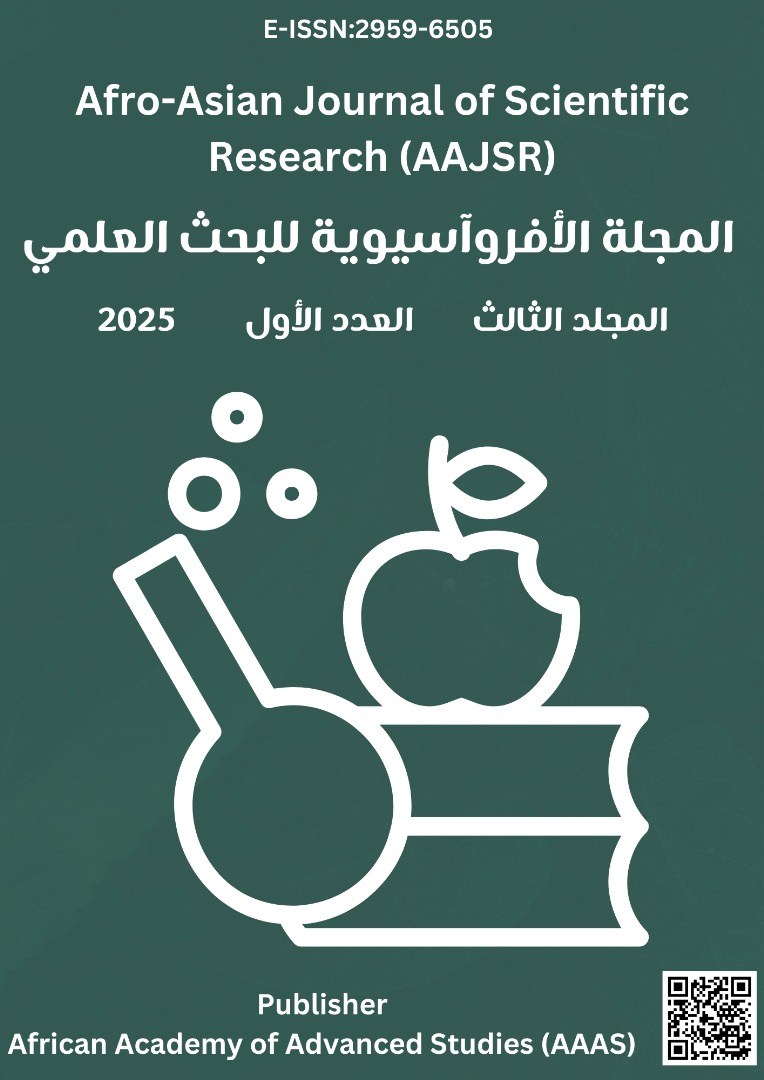Green Synthesis of Silver Nanoparticles Using Capparis Spinosa L. (Qapar) Leaf from Libya and Their Characterization Using XRD Technology
الكلمات المفتاحية:
Biosynthesis، Nanoparticles، Silver، Phytochemical، Capparis spinosa، XRDالملخص
In this investigation, a number of solvents, including water, ethanol, chloroform, and ethyl ether, were used to successively extract the dry leaves of C. spinosa L. Using leaf extract from C. spinosa L., silver nanoparticles (Ag-NPs) were effectively created. UV-Vis spectroscopy, FTIR, and XRD were used to determine the nature of the produced nanoparticles. The UV-visible spectroscopy revealed an absorption peak at about 470 nm, which moved to 430 nm at high extract concentrations. FTIR spectra demonstrated that the biomolecules in the extract were in charge of the Ag+ to Ag0 reduction and Ag-NP production. The primary product, Ag-NPs with a face-centered cubic structure and an average crystalline size of 16.14 nm, was verified by the XRD analysis, Phytochemical screening studies were performed on the resultant extracts. Alkaloids, carbohydrates, glycosides, phytosterols, saponins, flavonoids, tannins, proteins, and amino acids are all present in C. spinosa L. leaf extract. Additionally, the results demonstrated that whereas Quinones were lacking from the C. spinosa L. leaves under study, cardiac glycoside and tannins were found in all solvent extracts. The leaves of C. spinosa L. are abundant in minerals including K, Na, Ca, and Ba, according to the findings from flame photometry.






